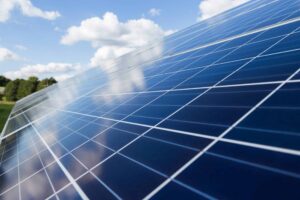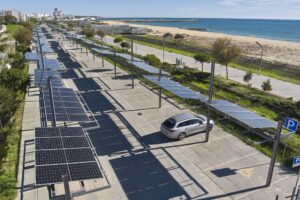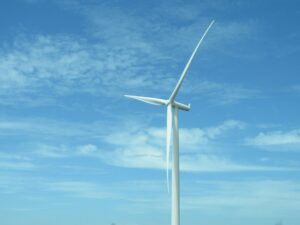By COLIN REID energy@algarveresident.com
Colin Reid is the technical director at the Enova Group and is a chartered engineer specialising in renewable and sustainable energy systems. He has over 20 years experience in the industry and lives with his wife and three children near Almancil.
IN THE PREVIOUS ARTICLE, we reviewed direct use of geothermal systems (those which use energy from the earth for heating and cooling) with underground pipes and ducts, but this month we study the use of this energy using refrigeration systems, commonly known as ground source heat pumps.
Using geothermal energy without heat pumps is limited as the temperature for heating and cooling will only approach the ground temperature (around 10 to 15 degrees Celsius).
This will assist with heating and cooling in conjunction with other systems but on its own can be inadequate.
Ground source heat pumps make use of the heat stored in the ground at this relatively stable temperature and raise it to a more useful output temperature of around 40 to 50 degrees Celsius, which is ideal for low temperature heating systems, such as under floor heating.
Heat pumps use refrigerant gas and an electrical compressor to take heat from a source and deliver it to an output using the refrigeration cycle.
In reverse mode, heat can be removed in the same way from an area for cooling.
The most common example of this is the refrigerator at home or an air conditioning system.
Traditional heat pumps or air conditioning units use air as the source of heat.
For example, a typical split air conditioning system has an internal wall mounted unit within the room and an external condensing unit mounted outside.
Disadvantages
During summer, the unit cools the room and the heat is rejected outside. In winter, in reverse mode, the unit becomes a heat pump and the heat is rejected inside to warm the room.
The problem with this system is that its efficiency is seriously affected by the air temperature outside.
During winter, as the outside air temperature drops so does the efficiency of the heating inside.
Obviously the colder it is outside, the more heating is required inside and the more inefficient the system becomes.
The same applies in summer in reverse mode.
As the temperature outside rises, the efficiency of cooling inside drops.
This is where ground source heat pumps have the advantage.
They use the ground as the energy source, which is much more stable than the air above and thus much more efficient. So for example, during winter in the Algarve, the air temperature may drop to say five degrees Celsius, whereas the ground temperature would remain at around 10 degrees Celsius, thus making the heating system more efficient (obviously the higher the temperature, the more easy it is to extract heat).
The situation in cooling mode is even more significant during summer in the Algarve.
The air temperature rises to say 35 degrees but the ground temperature will remain at about 15 degrees Celsius.
Therefore, ground source cooling is even more efficient.
It is therefore true to say that in the Algarve, the technology is actually more interesting for cooling rather than heating (in Northern Europe, heating is the main application).
Normal air type heat pumps are efficient and can achieve coefficients of performance (COPs) of about three to four.
This means that for every one KW of electrical power, three to four KW of heating are achieved.
However, ground source heat pumps are more efficient achieving COPs of closer to four or five.
Earth energy
Heat can be extracted from the ground (for heating) or rejected into the ground (for cooling) using either closed loop or open loop type water systems.
Closed loop systems comprise a sealed pumped water system (normally polyethylene or polypropylene tubes), which circulates water between the ground and the heat exchanger.
Open loop systems actually extract water from the ground (typically an aquifer or a lake or river), pass the water through a heat exchanger and then discharge it back into the ground or into the lake or river.
Open loop systems are more efficient but have major drawbacks:
• Permission is required from the local authority to extract the water;
• Water quality can affect the operation of the system (such as blockages and corrosion);
• Expensive geological surveys are necessary to locate adequate water sources;
• The water source could run out.
The most suitable ground source system for the Algarve and the one widely used in Portugal is the closed loop type.
The tubes can either be mounted horizontally at a depth of about one to two metres or vertically into the ground, similar to a borehole for fresh water. The vertical system is more expensive but more appropriate when space is limited.
In conclusion, ground source heat pumps are very efficient for both heating and cooling but once again, expert advice is highly recommended before embarking on any projects to ensure that the most appropriate system is chosen.
Next month, we look at power generation using renewable energy.
Colin Reid can be contacted by phone on (00351) 282 960 969 or by email at energy@algarveresident.com. To visit the Enova Group website, click on the link to the right of this page.
























